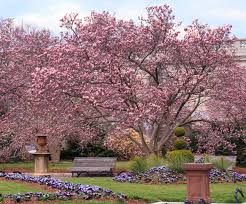The Fashion Styles of Empresses and Imperial Concubines: A Glimpse into Royal Wardrobe and Symbolism

Throughout history, the fashion styles of empresses and imperial concubines have been significant not only in terms of luxury and elegance but also as powerful symbols of political influence, cultural values, and social status. These royal women were often seen as representatives of their dynasties, and their attire played an essential role in reflecting their positions within the royal court. The garments worn by empresses and concubines were carefully crafted to convey messages of beauty, power, and favor, while also adhering to the ceremonial and cultural practices of the time.
In this article, we explore the fashion styles of empresses and imperial concubines across different cultures and eras, highlighting their cultural significance, the symbolism behind their attire, and the influence these garments had on shaping their roles within the royal court.
1. The Fashion of Empresses and Concubines in Ancient China
In Ancient China, the fashion of empresses and concubines was not just about personal style, but it carried deep cultural, political, and spiritual meanings. The clothing worn by royal women in the imperial court of China was elaborate, often involving multiple layers, intricate designs, and symbolic colors.
Empresses’ Robes: Symbolism of Authority and Power
The empress, the highest-ranking female member of the imperial court, wore elaborate garments that were designed to signify her status as the chief consort of the emperor. Her clothing was crafted from luxurious fabrics such as silk, brocade, and velvet, adorned with intricate embroidery, and often made in colors reserved specifically for the ruling family.
The dragon robe, or Longpao, was one of the most prominent garments worn by empresses during ceremonial occasions. It was made of silk and embroidered with gold thread, depicting dragons and other auspicious symbols. Dragons, in Chinese culture, were symbols of imperial authority, representing the emperor’s divine right to rule. The empress’s version of the dragon robe typically had a softer, more delicate design, often featuring phoenixes, which symbolized harmony and the role of women in Chinese society.
The color yellow was exclusively reserved for the emperor and his consort, as it symbolized the emperor’s dominion over the earth. The empress would wear yellow robes during important court ceremonies to reinforce her status as the emperor’s equal in the imperial family.
In addition to clothing, headpieces and jewelry were crucial in conveying the empress’s rank. The headdress, often composed of gold, pearls, and gemstones, was intricate and elegant, representing her position as the mother of the nation and as a protector of the dynasty. Empresses also wore large earrings and necklaces, which were often imbued with symbolic meaning and conveyed wealth, power, and divine favor.
Concubines’ Fashion: Subtle Elegance and Significance
While the empress held the highest rank, concubines played crucial roles in the royal court and their fashion choices were indicative of their specific position and relationship with the emperor. The clothing of concubines, though luxurious, was often less ostentatious than that of the empress, yet still full of symbolism and refinement.
Concubines wore robes made from silk and brocade, which were richly embroidered with patterns such as flowers, birds, and other natural motifs. These motifs carried different meanings, such as peonies, which symbolized beauty and prosperity, and lotus flowers, which represented purity.
Concubines often wore long, flowing gowns that signified their beauty and grace. The use of color was also a significant aspect of their attire. While the empress wore yellow, concubines could wear a range of colors, including red, green, and blue, each representing different virtues. For example, red was associated with power and vitality, while green symbolized peace and harmony.
The hairstyles of concubines were equally elaborate, with intricate hairpins, combs, and ornaments. These accessories were often made from precious materials, such as jade and gold, and were designed to enhance their beauty and elevate their social status. The beauty of concubines was often a reflection of their ability to attract the attention of the emperor, and their attire played a significant role in accentuating their appeal.
2. The Fashion of Empresses and Concubines in Imperial Japan
In Japan, the clothing worn by empresses and concubines, particularly during the Heian period (794-1185), was distinct in both its aesthetic and cultural significance. The junihitoe and sokutai were two key garments worn by the empress and noblewomen of the imperial court.
Junihitoe: The Twelve-Layer Kimono
The junihitoe, or “twelve-layered robe,” was the formal attire worn by the empress and other high-ranking women in the Japanese imperial court. As the name suggests, the garment was made up of twelve layers of silk kimonos, each symbolizing different aspects of the wearer’s status and role in the court. The layers were arranged in a specific order, with the outermost kimono being the most decorated, often featuring intricate embroidery with floral motifs, birds, and clouds. These designs were symbolic of nature and divine forces.
The colors of the junihitoe were carefully chosen based on the seasons and the imperial family’s symbolic representation. For example, the color red was often used for its auspicious qualities, while blue and green symbolized calmness and harmony. Each layer of the robe carried its own significance, and the arrangement of colors was carefully chosen to create a harmonious overall effect.
The sokutai, a more formal ceremonial garment, was worn by the emperor during official court rituals and was similarly rich in symbolism and design. The attire was made from silk and included various layers of robes, with intricate embroidery of phoenixes and dragons, symbolizing the emperor’s divine power and authority.
Concubines’ Clothing: Beauty and Competition
While the empress wore the junihitoe and sokutai, concubines were dressed in elegant kimonos that were often simpler but no less beautiful. Concubines wore kimonos made from fine silk and brocade, and their garments were often adorned with detailed embroidery and decorative sashes. The clothing of concubines was designed to accentuate their beauty and grace, and they would often wear elaborate hairpieces decorated with combs, ribbons, and other accessories.
As with the Chinese imperial court, the hairstyles of concubines were a key element of their appearance. They wore intricate hairpins and ornaments, and their hair was often styled in elevated arrangements, which signified their noble status. The beauty of the concubines was emphasized by the delicate designs of their clothing and the artistry of their makeup, which was used to create an idealized and ethereal appearance.
3. The Fashion of Empresses and Concubines in European Monarchies
The fashion of European empresses and concubines also evolved over the centuries, influenced by cultural norms, religious beliefs, and the political context of each era. Empresses and queens in medieval and Renaissance Europe often wore garments made from luxurious fabrics like velvet, brocade, and satin, which were adorned with precious gems and embroidery. These garments were designed to display the wealth and power of the monarchy.
The French Court: Royalty and Elegance
In France, the fashion of the Queen and her concubines was heavily influenced by the French court’s elaborate rituals and traditions. The court gowns worn by French royalty in the 17th and 18th centuries were designed to highlight the power and sophistication of the monarchy. The hoop skirt, or panniers, was a signature fashion element of the time, creating a wide, dramatic silhouette for royal women.
The robes were often adorned with lace, ribbons, and jewels, and they were paired with elaborate headpieces, such as wigs decorated with pearls and feathers. Marie Antoinette, for example, is known for her extravagant fashion, often featuring intricate corsets, luxurious gowns, and ornate hairstyles.
The Role of Fashion in Relationships and Rivalries
The attire of concubines in European monarchies also served as a reflection of their status within the court. While concubines did not have the same status as queens, they still dressed in elegant clothing to maintain their positions and attract the attention of the monarch. Their clothing was often simpler than that of queens, but it still emphasized beauty and grace. The rivalry between concubines and their competition for the king’s favor often played out through fashion, with both queens and concubines using clothing as a way to display their worthiness and beauty.
4. Conclusion: Fashion as a Symbol of Power, Beauty, and Authority
The fashion styles of empresses and concubines have long been a significant part of royal history, representing much more than just luxury and beauty. These garments were imbued with symbolism, marking the wearer’s social and political status, their connection to the divine, and their relationship to the emperor or king. Whether in China, Japan, or Europe, the attire of royal women conveyed messages of power, grace, and beauty, and played an essential role in
shaping the way these women were viewed within their respective cultures.
Through these garments, empresses and concubines not only showcased their beauty and wealth but also participated in the complex rituals and power dynamics of the royal courts, using fashion as a means of negotiation, expression, and influence. The fashion of royal women, thus, was an essential part of their identity and their role in the cultural and political fabric of their time.

